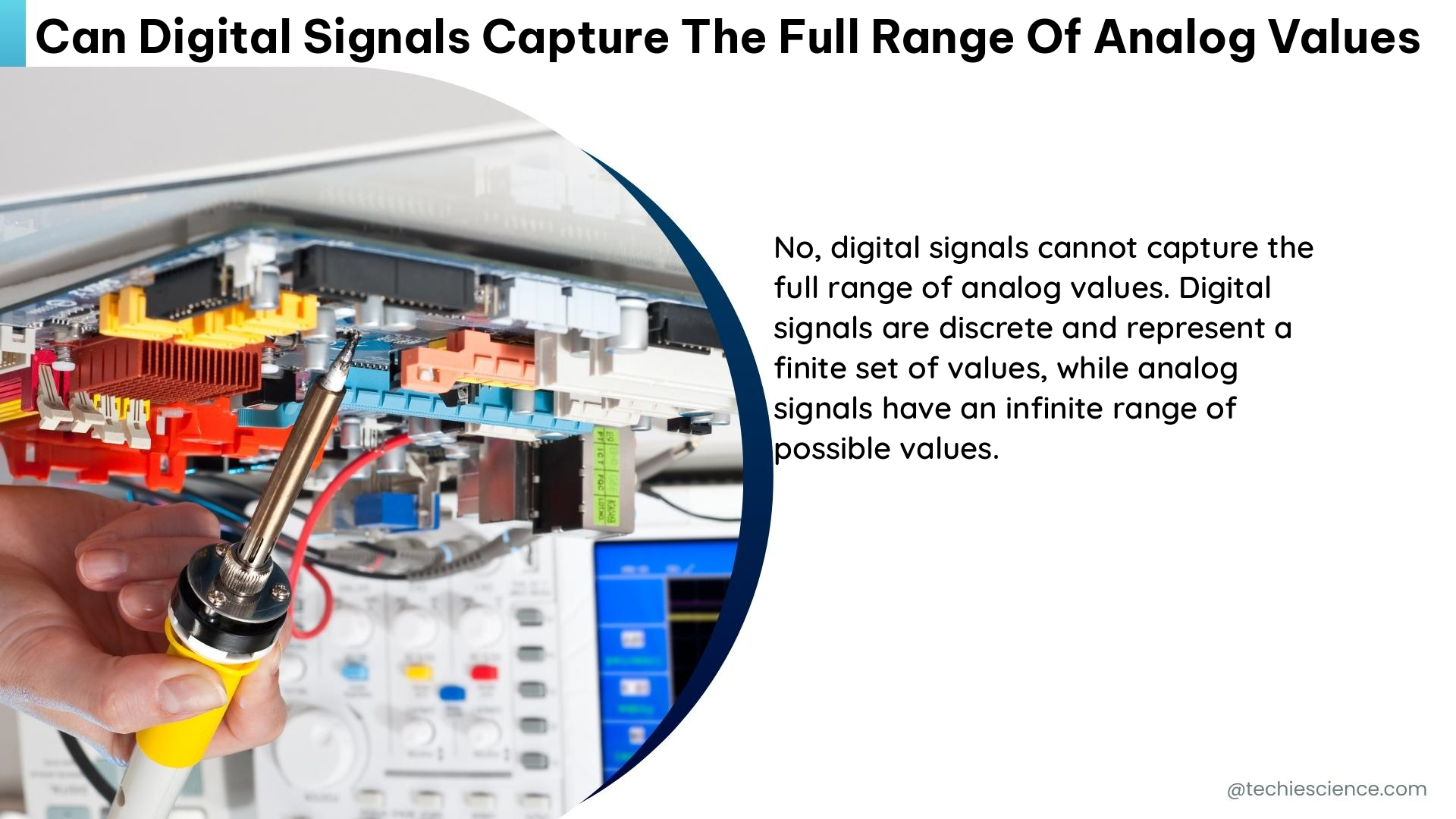Digital signals, by their very nature, cannot capture the full range of analog values due to the inherent differences between the two types of signals. Analog signals are continuously changing and can take on an infinite number of values, while digital signals are discrete and can only take on a finite number of values. This fundamental difference poses a challenge when it comes to accurately representing analog information in the digital domain.
Understanding the Analog-to-Digital Conversion Process
The process of converting an analog signal to a digital signal involves a technique called sampling. During this process, the analog signal is measured at regular intervals, and a digital value is assigned to each sample. The Nyquist-Shannon sampling theorem states that to accurately capture the frequency content of an analog signal, it must be sampled at a rate equal to at least twice the highest frequency component of the signal.
However, even if the sampling rate is sufficient, there will still be a loss of information due to quantization error. Quantization error is the difference between the actual analog value and the nearest digital value that can be represented by the digital signal. This error occurs because the digital signal can only take on a finite number of values, while the analog signal can take on an infinite number of values.
Quantization Error and Digital Resolution

The amount of quantization error can be reduced by increasing the resolution of the digital signal, which is typically measured in bits. A higher resolution digital signal can represent a larger range of analog values with greater precision. For example, a 16-bit digital signal can represent 65,536 distinct values, while a 24-bit digital signal can represent 16,777,216 distinct values.
However, even with a high-resolution digital signal, there will still be some degree of quantization error, and the digital signal will not be able to capture the full range of analog values. This is because the digital signal is still limited to a finite number of values, and there will always be some analog values that fall between the discrete digital values.
Factors Affecting the Capture of Analog Values
Several factors can influence the ability of digital signals to capture the full range of analog values:
-
Sampling Rate: As mentioned earlier, the sampling rate must be at least twice the highest frequency component of the analog signal to avoid aliasing. Higher sampling rates can improve the capture of analog values, but they also increase the amount of data that needs to be processed.
-
Bit Depth: The bit depth of the digital signal determines the number of discrete values that can be represented. Higher bit depths, such as 24-bit or 32-bit, can capture a wider range of analog values with greater precision.
-
Analog-to-Digital Converter (ADC) Design: The design of the ADC, which is the hardware component responsible for converting the analog signal to a digital signal, can also impact the ability to capture the full range of analog values. Factors such as the ADC’s resolution, linearity, and dynamic range can all affect the quality of the digital representation.
-
Signal Conditioning: Before the analog signal is converted to a digital signal, it may need to be conditioned to ensure that it falls within the input range of the ADC. This can involve amplification, filtering, or other signal processing techniques to optimize the capture of the analog values.
Practical Considerations and Limitations
In real-world applications, the ability to capture the full range of analog values is often limited by practical considerations, such as cost, power consumption, and system complexity. In many cases, a balance must be struck between the desired level of precision and the available resources.
For example, in audio applications, a 16-bit digital signal is often considered sufficient to capture the full range of human hearing, which spans a frequency range of approximately 20 Hz to 20 kHz. However, in specialized applications, such as high-end audio equipment or scientific instrumentation, higher bit depths may be necessary to capture the full range of analog values with greater precision.
Conclusion
While digital signals can capture a wide range of analog values with sufficient sampling rate and resolution, they cannot capture the full range of analog values due to the inherent limitations of quantization error. The degree of quantization error can be minimized through the use of high-resolution digital signals and advanced sampling techniques, but it cannot be eliminated entirely.
Ultimately, the choice of whether to use digital or analog signals in a particular application will depend on the specific requirements and constraints of the system, as well as the trade-offs between precision, cost, power consumption, and other factors.
References
- Digital Recording Technology Midterm Flashcards | Quizlet. https://quizlet.com/493844179/digital-recording-technology-midterm-flash-cards/
- Analog vs. Digital Signals: Uses, Advantages and Disadvantages. https://www.monolithicpower.com/en/analog-vs-digital-signal
- Analog vs. Digital Devices | Overview, Differences & Examples. https://study.com/learn/lesson/analog-vs-digital-devices-overview-differences-examples.html
- Data Conversion Handbook. https://www.analog.com/media/en/training-seminars/design-handbooks/Data-Conversion-Handbook/Chapter2.pdf
- Engineer’s Guide to the Digitization of Analog Signals. https://download.ni.com/evaluation/daq/NI_Engineers_Guide_to_Digitization.pdf

The lambdageeks.com Core SME Team is a group of experienced subject matter experts from diverse scientific and technical fields including Physics, Chemistry, Technology,Electronics & Electrical Engineering, Automotive, Mechanical Engineering. Our team collaborates to create high-quality, well-researched articles on a wide range of science and technology topics for the lambdageeks.com website.
All Our Senior SME are having more than 7 Years of experience in the respective fields . They are either Working Industry Professionals or assocaited With different Universities. Refer Our Authors Page to get to know About our Core SMEs.